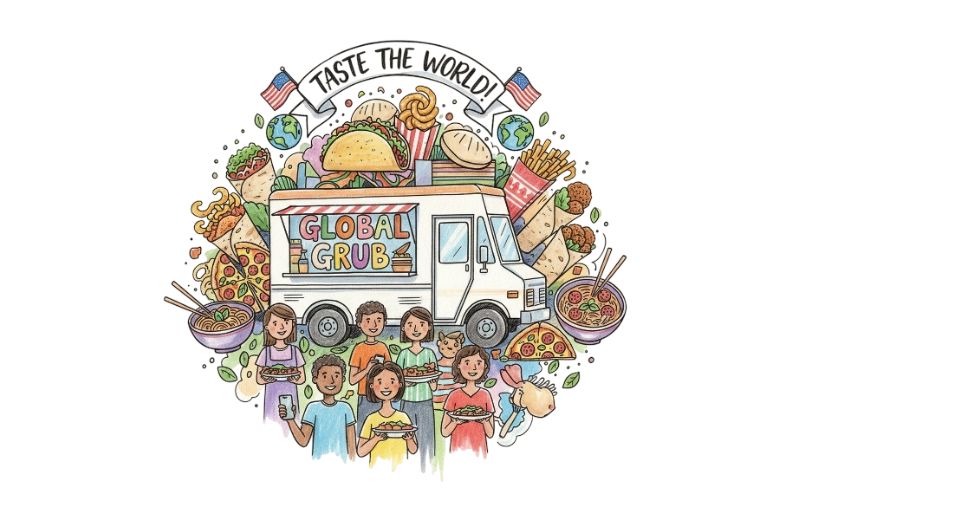
Sep 08, 2025

The Global Ethnic Street Food Retail Market Report by Metastat Insight presents an in-depth look into a market shaped by shifting consumer behaviour, regional influences on cuisine, and the growing appeal of authentic flavours across much geography. The market is also cultural, with street-level ideas and traditional recipes gradually being translated into retail spaces, producing products that preserve the initial intensity of the source and are adapted to modern packaging and distribution mechanisms. This intersection of tradition and convenience of retail delineates the industry in the manner in which heritage and business manage to move together.
The transformation of street food into retail-ready has produced a narrative that goes beyond taste. Improved packaging, distribution infrastructure, and branding place products previously limited to street vendors onto the shelves of stores worldwide as recognized names. This change not only reshapes consumer expectations but also opens up retailers to new opportunities for product category extension. What was previously a preserve of congested streets of local market food stalls now occupies space in supermarkets, specialty retail stores, and the internet, portraying a growing reach that crossed various consumer bases.
Cultural portrayal assumes an imperative force behind the movement of such a market. Recipes founded on specific communities have backstories which are increasingly valued by consumers seeking authenticity. Each product in this segment conveys a message beyond flavour; it often conveys symbolism tied to memory, place, and cultural history. Manufacturers and sellers in this market are therefore selling more than food; they are selling experiences that connect people with heritage outside their immediate environment. This creates a richer engagement, as food is used as a means of cultural interchange on a commercial platform.
Branding methods in this sector place heavy emphasis on origin myths, echoing growing sensitivity to sourcing stories that differentiate among foods. Heritage and preparation processes are evoked in labels to reassure consumers that authenticity integrity is not sacrificed in commercial reach. This method enforces consumer loyalty while enhancing appreciation for cuisines that might otherwise be a foreigner beyond their indigenous context. The combination of familiarity to some and novelty to others makes for an interesting cycle of demand.
Retailing distribution has deeply influenced how these foods become available to wider segments. Brick-and-mortar establishments still have a presence, but digital retailing platforms have brought global access much quicker, making it possible for specialty foods to be seen without being location-specific. The heightened use of online media has further increased the narrative power of these products, as one can include storytelling within digital promotions that take the sensory interest and enlarge it into a wider lifestyle connection. This is evidence of the industry's flexibility to adapt to changes in the modes of consumption while maintaining cultural heritage as a key aspect.
The supply chain that drives this market is one of complexity under the control of global sourcing, logistics, and preservation requirements. Products can cross multiple borders before reaching final destinations, and hence an extra handling is required to provide freshness and originality. Leverage of packaging technology that maintains flavour while extending shelf life has become part of the fabric of the industry. This investment is reflective of the value that is put on authenticity, where settling for less in keeping it good may sacrifice the very attributes that set the market apart.
Consumer value perception here is more than just affordability. There is experiential value and emotional value at stake in the purchasing decision, evidence that the appeal is not exclusively about taste. Visual attractiveness, cultural affinity, and even social sharing of these foods contribute towards shaping broader patterns of consumption. The multi-layered value allows the sector to weather trends in traditional retail dynamics by offering more than mere nourishment.
Innovation in this case is low-key, since the essence is retaining authenticity and not replacing it. However, adjustments to accommodate dietary needs, ease of packaging, and contemporary lifestyles continue to occur. These adaptations allow the products to be universal to contemporary consumers but retain their connection with their cultural roots. Such fine balancing illustrates how the industry adapts to contemporary needs without sacrificing what makes it unique.
The Global Ethnic Street Food Retail Market Report by Metastat Insight at last highlights authenticity, cultural storytelling, and retail development as core drivers of the sector's growth. The evolution from street origin to retail shop shelf presentations illustrates how food serves as sustenance and cultural bridge, expanding horizons for consumers without undermining traditions. It is in the twin force of commerce and cultural identity that the market demonstrates how tastes that were confined to narrow alleyways can receive acknowledgement on global stages, without sacrificing the character from which they originate.
Drop us an email at:
Call us on:
+1 214 613 5758
+91 73850 57479